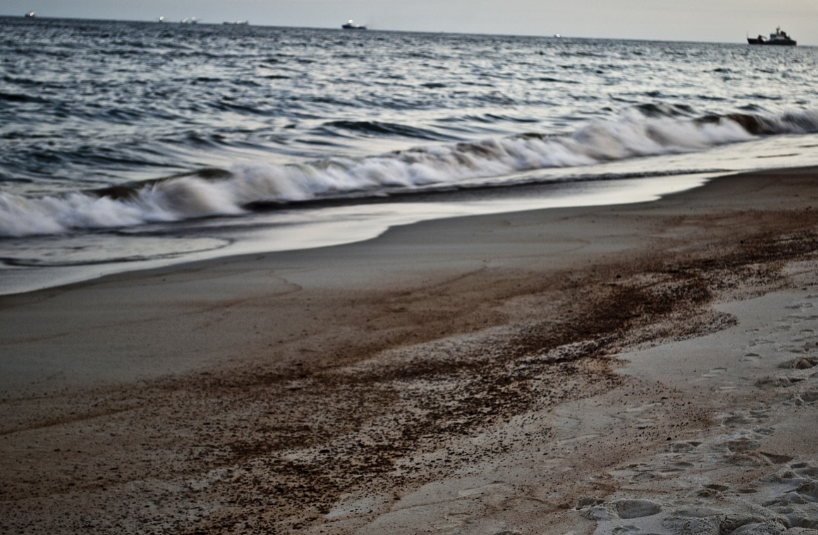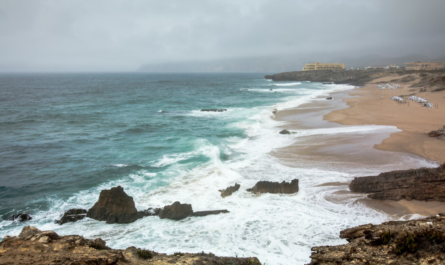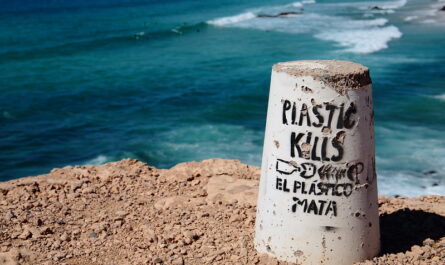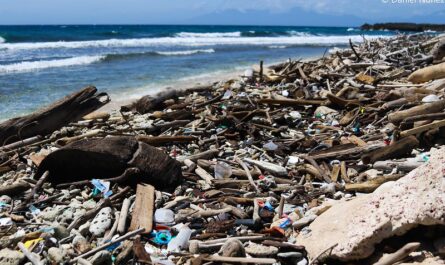From Caribbean reefs to the windswept coasts of Spain and Portugal, the Atlantic Ocean has borne repeated blows from accidental oil releases. Tanker groundings, pipeline ruptures, drilling‑rig explosions, and even weather‑related storage‑tank failures have sent crude and refined products into surface waters, onto shorelines, and down into the deep sea. Each incident becomes a toxic pulse that can linger in sediments for decades, affecting everything from planktonic food webs to apex predators such as dolphins and sharks. While some spills capture global headlines—Deepwater Horizon in 2010 or the Prestige tanker disaster in 2002—many others slip below international radar yet still damage ecosystems and coastal economies. This article synthesizes what science now knows about how oil spills disturb Atlantic marine life, drawing on case studies ranging from the Gulf of Mexico to the Bay of Biscay and recent events in the Caribbean and Tobago. It also offers a forward‑looking assessment of emerging risks, response strategies, and long‑term restoration priorities.
1. A Catalog of Major Atlantic Spills—and What They Teach Us
| Year | Incident | Estimated Volume | Key Ecological Findings |
|---|---|---|---|
| 1979 | Ixtoc I blowout (Gulf of Mexico) | ~470 million litres | Large areas of seagrass and coral were smothered; fishes experienced tarball ingestion, yet some shallow habitats showed partial recovery after four years. |
| 2002 | Prestige tanker breakup (off Galicia, Spain) | 63 000 tonnes | Hydrocarbons coated 2,300 km of coastline; intertidal invertebrate communities suffered up to 80 % mortality, with barnacle and limpet populations taking a decade to rebound. |
| 2010 | Deepwater Horizon blowout (northern Gulf of Mexico) | 780 million litres | Dolphin strandings rose 35 %; sea‑turtle nest success fell; deep‑sea coral gardens 1,400 m down showed tissue loss and polyp death years later. |
| 2019 | Hurricane Dorian storage‑tank rupture (Grand Bahama) | ≥55 000 barrels | Mangrove nurseries for juvenile fishes were coated; polycyclic aromatic hydrocarbons persisted in wetland sediments two years later. |
| 2024 | Tobago mystery vessel spill (Caribbean side of Atlantic) | Volume under investigation | Thick emulsion washed ashore, threatening coral‑reef tourism and nesting leatherback turtles; forensic analysis ongoing. |
Each event highlights recurring themes: nearshore habitats (mangroves, salt marshes, rocky shores) suffer immediate mechanical smothering; offshore spills can travel thousands of kilometres on currents, fracturing into tarballs that beach weeks or months later; chronic sublethal effects often outlast the news cycle.
2. Mechanisms of Harm: From Molecular Toxicity to Ecosystem Collapse
Physical Coating and Smothering
Viscous fractions in crude spread into surface slicks that block light, impair gas exchange, and physically adhere to feathers, fur, and fish gills. Seabirds such as northern gannets lose thermal insulation and buoyancy; marine mammals inhale volatile fumes while surfacing through oily sheens.
Chemical Toxicity
Oil comprises hundreds of compounds—polycyclic aromatic hydrocarbons (PAHs) being among the most persistent and carcinogenic. PAHs insert into cell membranes, disrupting endocrine signaling, DNA replication, and immune responses. Laboratory exposures on Atlantic cod embryos confirm developmental deformities at PAH concentrations measured near the Deepwater Horizon plume.
Oxygen Depletion
Microbes that metabolize hydrocarbons consume dissolved oxygen, creating hypoxic “dead zones.” After Deepwater Horizon, mid‑water oxygen levels dropped by 20 % over 20,000 square kilometres. Low oxygen slows fish growth and forces mobile species into less suitable refuge areas.
Food‑Web Contamination
Filter‑feeding bivalves and zooplankton accumulate oil residues, passing them up the food chain. Studies five years after the Prestige spill still detected PAHs in commercial mussel beds, prompting intermittent fishery closures and consumer‑confidence crises.
3. Species‑Specific Impacts in the Atlantic
Plankton and Larval Fish
Planktonic eggs and larvae float within the upper ten metres—a layer most likely to intersect thin surface slicks. Even brief exposure can reduce hatching success by half. Atlantic menhaden and anchovy populations—key forage for larger fish and seabirds—recorded recruitment dips in years with major Gulf slick events.
Coral and Deep‑Sea Communities
The Atlantic houses cold‑water coral reefs along the continental slope from Ireland to West Africa. In situ ROV imagery taken near Deepwater Horizon revealed Lophelia pertusa colonies covered in brown flocculent material, with tissue necrosis evident nine months post‑spill. Recovery at 1,200 metres depth is glacial; calcification rates mean lost centuries‑old branches may never regrow in a human lifetime.
Seabirds
During the Prestige event, wildlife responders collected 22,000 oiled birds; mortality estimates exceeded 250,000 individuals, including razorbills and common murres. Similar trends emerged in the Gulf, where laughing gull survival fell by 30 % in heavily oiled areas, affecting breeding colonies for multiple seasons.
Marine Mammals and Sea Turtles
Bottlenose dolphins in Barataria Bay exhibited lung disease, adrenal dysfunction, and decreased reproductive success for at least seven years post‑spill. Loggerhead and Kemp’s ridley turtles encountered tar mats on nesting beaches and oil in sargassum foraging grounds, leading to higher embryo mortality and hatchling disorientation.
4. Habitat‑Level Consequences
Mangroves and Salt Marshes
Oil that infiltrates mangrove pneumatophores restricts gas exchange, killing root tissue and causing tree die‑off. In the Bahamas, aerial surveys found 350 hectares of blackened mangrove fringe after Dorian. The loss removes natural storm buffers and nursery habitat for snapper and bonefish.
Rocky and Sandy Shorelines
Wave action and tidal flushing can speed weathering but also push oil into crevices, where it sticks to limpets, anemones, and algae. On Galicia’s Costa da Morte, Prestige residues were still measurable inside granite fissures six years later, although surface rocks appeared clean.
Pelagic Zones
Subsurface plumes—such as the 35‑kilometre plume at 1,000 metres depth from Deepwater Horizon—carry micro‑droplets across basins, challenging cleanup teams that traditionally focus on skimming surface slicks.
5. Socio‑Economic Dimensions (Because People Are Part of the Ecosystem)
- Fisheries – Closed grounds after Prestige deprived Galician fishers of income for two seasons; Gulf shrimp landings fell sharply in 2011, triggering federal disaster aid.
- Tourism – Tobago’s pristine beaches underpin its economy; tar‑ball landings forced cancellations at dive resorts and turtle‑watching lodges.
- Public Health – Cleanup workers exposed to aerosols report headaches, skin lesions, and respiratory issues. Lawsuits linked to Deepwater Horizon continue fifteen years on, with limited compensation successes.
- Cultural Heritage – Subsistence fishers in Louisiana’s Pointe‑au‑Chien tribe lost access to traditional oyster beds, eroding culinary heritage and language linked to harvesting rituals.
6. Response and Mitigation: Tools with Trade‑offs
Mechanical Recovery
Booms and skimmers remain first‑line tactics for nearshore containment, yet heavy seas often render them ineffective. In the Prestige accident, breaking waves overwhelmed boom barriers, pushing oil into estuaries.
Chemical Dispersants
Corexit 9500A, used widely during Deepwater Horizon, breaks oil into micro‑droplets that sink or remain suspended, reducing coastline fouling but increasing exposure risk for mid‑water organisms. Toxicity studies suggest synergistic harm when oil and dispersant combine.
In‑Situ Burning
Where conditions allow, controlled fires rapidly remove surface slicks, converting oil to CO₂ and soot. However, black‑carbon fallout can settle on ice or coastal vegetation, altering albedo and nutrient cycling.
Bioremediation
Nutrient amendments or introduction of oil‑degrading microbes can accelerate breakdown. Trials along the Galician coast reported enhanced hydrocarbon dissipation in beach sands fertilized with phosphorus, yet scaling remains constrained by regulatory concerns.
Legal and Policy Instruments
Post‑Exxon Valdez and Prestige, the IMO strengthened tanker design standards (double hulls). The U.S. Oil Pollution Act of 1990 mandates trust‑funded restoration. Still, enforcement gaps persist in developing coastal states lacking monitoring resources.
7. Emerging Risks in the Atlantic Basin
- Aging Infrastructure – Pipelines laid in the 1970s cross the Gulf and North Sea; corrosion incidents rise with age.
- Expanding Arctic Routes – Retreating sea ice entices shipping through the Northwest Passage and Northern Sea Route, increasing traffic near sensitive polar ecosystems that feed the North Atlantic.
- Deeper Wells, Higher Stakes – Ultra‑deep explorations off Brazil’s Atlantic margin and Guyana mean high‑pressure reservoirs where blowouts are harder to cap.
- Extreme Weather – Stronger hurricanes threaten coastal storage farms, as seen in the Bahamas; rainfall‑induced landslides in South America could rupture pipelines.
- Plastic–Oil Interactions – Microplastics may adsorb hydrocarbons, facilitating their ingestion by zooplankton and compounding toxicity.
8. Restoration and Long‑Term Monitoring
Effective recovery transcends immediate cleanup. Scientists now advocate:
- Baseline Mapping – Pre‑spill data on benthic communities accelerate damage assessment.
- Sentinel Species – Tagging sea turtles, sperm whales, and tuna helps track oil exposure across migratory routes.
- Sediment Coring – Repeated sampling reveals PAH decay rates and guides dredging decisions.
- Blue‑Carbon Projects – Replanting mangroves not only restores habitat but sequesters carbon, offering dual climate benefits.
- Community‑Led Fishery Reopenings – Collaborative testing rebuilds trust when contaminant levels fall below safety thresholds.
9. Recommendations for Reducing Future Harm
- Tighten Global Liability Caps so polluters fund full ecosystem restoration, not just shoreline cleaning.
- Mandate Real‑Time Pipeline Monitoring using fiber‑optic pressure sensors to detect micro‑leaks.
- Expand Marine Protected Areas along tanker routes, creating buffer zones where drilling is off‑limits.
- Invest in Research on Non‑Toxic Dispersants derived from biosurfactants.
- Support Coastal Indigenous Stewardship—traditional ecological knowledge often spots early anomalies in fish behavior or water quality.
Conclusion
Oil spills in the Atlantic are neither isolated accidents nor wholly unpredictable shocks; they are the foreseeable result of complex supply chains that push fossil fuels across fragile seascapes. Each slick leaves a chemical signature that threads through plankton, fishes, birds, and mammals, weaving chronic impairment into the fabric of marine life long after the headlines fade. Deepwater Horizon taught us that deep‑sea damage can equal or exceed shoreline devastation; the Prestige reminded us that cold‑water coasts are not immune; Hurricane Dorian and the Tobago spill show how climate‑charged storms and mystery vessels can unleash localized disasters with global echoes. Preventing future harm requires shifting emphasis from reactive cleanup to proactive risk reduction: modernizing infrastructure, enforcing robust liability, and investing in rapid‑response science that keeps pace with drilling technology. Only then can the Atlantic’s grand tapestry of coral gardens, turtle migrations, whale songs, and coastal livelihoods hope to endure without the indelible stain of the next black tide.



